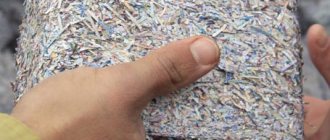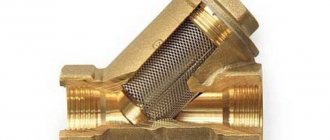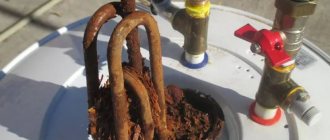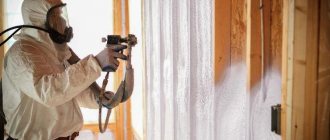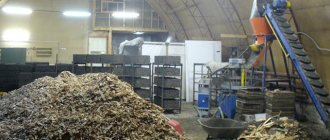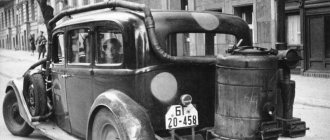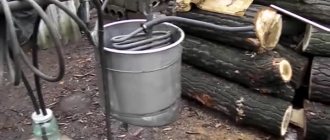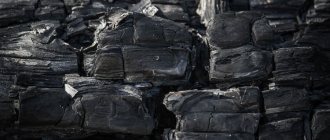Spring has arrived, and with it the time for barbecue. But what do you need to cook a delicious meal in the fresh air?! Of course products! But you can’t do without fuel for a fire, because the aromatic smell of smoke is 50% of success. You can take fruit firewood or any other wood left over from last season. But it is best to use charcoal. Its consumption is low and the heat is stable. Nowadays a huge amount of such raw materials is sold, but we are thrifty owners, aren’t we?! Therefore, I decided to write about how to make charcoal with your own hands at home.
How is charcoal made?
Our ancestors made charcoal. They came to this process purely intuitively. The bottom line is that the wood must burn without oxygen. In the modern world, this procedure is called pyrolysis, and it is used not only in the production of charcoal.
- Making such fuel at home is quite simple. All you need is wood. In fact, any will do, but I do not recommend using resin-containing rocks. They will also make charcoal, but some nuances will need to be taken into account.
- I advise you to use alder, poplar, acacia, oak, beech, hornbeam, maple, ash and even willow. If we approach it from a scientific point of view, then these tree species form different grades of charcoal, which differ in their characteristics. But you and I make fuel for ourselves, at home, so any wood will do. There are three ways to make your own charcoal at home.
Scope of use of charcoal
Home use of charcoal is far from the only area of its application. Burnt wood can be used in industry for the following purposes:
- for “filling” filters;
- to saturate steel with carbon and obtain pure alloys;
- for the production of glass, plastics, etc.;
- in pharmaceuticals for the production of activated carbon;
- for creating natural food dyes;
- for use in agricultural needs.
The significant concentration of carbon makes charcoal a strong reducing agent. Such properties made it possible to use it in metallurgy, chemical, paint and varnish and electrical industries.
Charcoal in a pit
The easiest way to make charcoal at home is to make it in a pit. To do this you will need firewood, a metal sheet meter by meter or some other metal cover. And of course the pit itself. I recommend digging it up to a meter deep and 60-80 centimeters wide. From this volume you will get almost two bags of charcoal.
- The first step is to dig a hole and compact the bottom well.
- Next, we begin to build a fire at the bottom of the pit. Any firewood and sticks are suitable for this.
- It is worth filling the hole about a third. When the wood is almost burnt out, put the rest of the wood on top to the top. It will be very good if all the logs are the same size. They must be folded very carefully (if possible). As I wrote earlier, in principle you can use any wood. But it is better to take a certain type of wood for one firebox.
- When all the piled firewood has caught fire and the fire appears from above, you need to cover the fire with a lid or a sheet of iron. Next, sprinkle everything with soil to block the access of oxygen to the maximum. You can also sprinkle raw grass on top. The most important thing is that the lid is flush with the ground and does not rest against the firewood.
- Next, we leave our pit alone for a couple of days until the process is completed and the firewood itself has cooled down. After this time, remove the lid and take out the charcoal you made yourself.
Types of coal
There are various classes of charcoal on sale, as well as its types. He can be:
- red, produced through a soft charcoal process using coniferous wood;
- white – oak, beech and other hardwoods are used;
- black - from soft raw materials (aspen, linden, alder).
The most common option is black coal, but if you decide to produce it yourself and sell it to other buyers, then it is advisable to focus on the type of wood that is common in a particular area.
It is also important to take into account the requirements of GOST 7657-84. According to the standards, coal is divided into classes:
- “A” - hardwood species are used.
- “B” - a combined approach is used with a mixture of hard and soft material.
- “B” - coniferous, hard and soft raw materials are mixed.
As the grade and quality of fuel increases, its popularity will increase.
In a barrel
A more optimal way, in my opinion, to make charcoal at home is to produce it in a metal barrel. It can be of any size. If you have a container made of petroleum products or other materials, I recommend that you burn it thoroughly before use. There are two ways to make charcoal in a barrel.
- The first method resembles the process of making charcoal in a pit. The only exception would be that there is no need to dig a hole. I recommend placing two bricks at the bottom of the barrel and building a fire between them. When the fire is strong enough, place a metal grate on top of the bricks. After that, place the firewood on it. When the fire has consumed the entire top layer, close the barrel with a lid, leaving a small gap. After a while, white smoke should come out of it, this is a sign that the lid can be closed completely. Next, we wait until the barrel cools down and take out our fuel.
- The second method involves making a fire under the barrel itself. Firewood is loaded inside the container, the lid is closed, and a small hole is made at the bottom for air to enter and gases to escape. The barrel needs to be placed on some kind of frame - these can be ordinary bricks. Next, make a fire and maintain the fire for 12 hours. This time may vary depending on the type of wood. After this period, you can open the barrel and take out the coal. This method is good because the finished coals are of the correct shape and do not crumble so much. The downside is that the process takes a lot of time.
Distinctive properties of charcoal
If we compare charcoal, for example, with peat or firewood, it has undeniable advantages:
- better heat dissipation;
- absence of smoky smoke and harmful emissions into the air;
- low cost;
- a small amount of ash after complete combustion of the fuel;
- absence of foreign impurities (sulfur, phosphorus, etc.);
- ability to maintain high temperature for a long time.
What does charcoal look like
? Charcoal is produced by combustion, and the raw material for it is wood itself. It is heated to high temperatures in an airless environment. The finished product is packaged and supplied for sale to stores, markets, wholesale centers, etc.
Thanks to a large number of positive qualities, charcoal is increasingly replacing other types of fuel. To produce it in large quantities, special burning furnaces are used, in which wood is burned at high temperatures without access to oxygen. The absence of air allows the integrity of the wood fibers to be preserved.
In the oven
- You can cook charcoal in any oven. To do this, we light a fire, add wood, and wait for it to burn. It is necessary to wait until they turn completely red, after which they must be removed from the oven and transferred to a metal or ceramic container.
- After this, you need to immediately close it with a lid, blocking the access of oxygen. When the container has cooled down, it can be removed from the container.
- I’ll be honest, I haven’t tried this method, and it seems to me that the charcoal that comes out isn’t of very good quality. But if you don't want to dig a hole or don't have a barrel, you can use it.
Production technology
Coal from wood is consumed in large volumes by metallurgical enterprises, where it is used to produce high-purity alloys, as well as to saturate the metal with carbon, resulting in an increase in its physical properties.
In the chemical industry, this product is used in the manufacture of glass, various plastics and even paints. Coal has not bypassed the food industry; in food products it often acts as a natural coloring agent, which is displayed on their packaging under the code E153.
Such significant demand requires corresponding production volumes, so charcoal stoves are usually located near or on the territory of wood processing enterprises. This is understandable, because there is a large amount of large waste wood of various species there, which serves as raw material for charcoaling.
To explain in simple words, the charcoal production technology is designed to solve the problem of obtaining carbon from wood to the highest possible degree of purity. To do this, all other organic and inorganic substances must be removed, which is achieved using a pyrolysis reaction. Its essence lies in the separation of all unnecessary compounds from raw materials by thermal decomposition in the presence of insufficient oxygen. But let's go in order.
There are four stages of the production process in total (not counting the preliminary preparation of raw materials):
- drying at temperatures up to 150 ºС. The pyrolysis process, which takes place at higher temperatures, requires a minimum amount of moisture in the raw material;
- pyrolysis, which takes place at a temperature of 150-350 ºС and a lack of oxygen. Thermal decomposition of substances occurs and coal begins to form. Pyrolysis gases are released;
- combustion (calcination) when heated to 500-550 ºС. At this stage, tars and residues of substances are released from the coal in the form of gases;
- recovery (cooling).
In essence, a coal production plant is a furnace where all the above reactions take place. The figure below shows a diagram of the technological process:
Bottom line
I hope my article today was clear and useful to you. Now you know that you can not only buy charcoal, but also make it yourself. I'm confident you'll succeed and enjoy delicious outdoor meals cooked with home-grown fuel.
If you are not yet familiar with my colleague’s article “Spring, it’s time for barbecue, or how to make a fire correctly,” then you can read it at this link.
Write in the comments what you use for the fire: wood or charcoal?
Product labeling
The difference in approaches is explained by the high content of resin-like substances in coniferous raw materials, which, if the pyrolysis reactor is sealed, will complicate the implementation of the technology.
From the pyrolysis products of the first group, coal is obtained, marked with the letter A, with a maximum carbon concentration reaching 90% and a minimum content of mineral components (2.5%).
If a mixture of raw materials from the first two groups was subjected to pyrolysis, then the maximum carbon content in charcoal labeled B reaches 88% with the same ash content.
If a mixture of all rocks is subjected to charcoalization, a coal conglomerate is formed, marked with the letter B. The concentration of skeletal carbon in it reaches a maximum of 77%, mineral components - 4%, many other parameters are not standardized.
Note! Products of grade A have the best characteristics, therefore they are used for subsequent activation to obtain sorbents.
Coal of group B demonstrates good qualities; it and products of grade A are used in industrial organic synthesis.
The result of implementing charcoal technology has acceptable properties to meet the needs of most consumers if the process is carried out correctly. There are many people who want to prepare a valuable product from wood. There are far fewer people willing to delve into the specifics of implementing an idea in practice, which can lead to unpleasant consequences with unpredictable outcomes.
Self-production
Stores sell bags of ready-made coal, but they are not cheap. You can independently produce a fairly large volume of fuel, minimizing costs.
Hardwood is best suited (you will get grade A coal):
- Birch - gives intense heat and rapid heat transfer.
- Oak – uniform heat and long burning process.
- And also - beech, hornbeam, elm.
Coniferous species + wood from the first list (grade B):
- pine;
- fir;
- spruce etc...
Grade B – soft breeds:
- poplar;
- aspen;
- alder;
- willow;
- linden, etc...
Let's look at two “artisanal” production methods.
When building our own house, we ourselves can plan the layout of the premises, but there are also some standards that must be met in accordance with sanitary and construction requirements. The requirements for a boiler room in a private house must be strictly followed, because the safety of the residents depends on it. What standards does SNIP require for a boiler room, read the article.
You will find step-by-step instructions for making a stove with a heat exchanger here.
In a barrel
Capacity requirements:
- The dimensions of the barrel will depend on the amount of raw materials available.
- The walls must be thick.
- The oil product barrel must first be burned out.
- It is not advisable to use containers for chemicals.
- There must be a lid made of non-flammable materials that fits tightly to the barrel.
Sequence of work:
- Several small holes are made in the lid to allow gases to escape, but so that they can be closed.
- A mini-stove is built on a sheet of metal from several bricks.
- The barrel is placed on bricks.
- It is filled to the top with wood raw materials and covered with a lid.
- A fire is built under the container, in the bricks.
- When the barrel warms up well, gas will begin to come out of the wood.
- The combustion process continues all the time until the gas comes out and a little after that - in general, about 2-3 hours.
- Now the fire is extinguished, and the holes in the lid are closed.
- The barrel is left alone for a day or two.
The method is convenient and inexpensive, but it is difficult to control the process. At first, you may or may not burn out the coal. The next method is “in the hole”, it is more open, which means there is less risk of errors.
Preparation of material
Not every piece of wood can use charcoal for cooking. These are fruit trees (pear, apple, cherry), deciduous trees (alder, oak, maple) and the common birch. Coniferous species are not suitable at all. Such raw materials contain resins (this will ruin the taste of the meat).
Construction scraps are not used to make coal for barbecues: impregnations and adhesives will leave carcinogenic substances in the coal during combustion.
Birch is not the best option, but it is a common tree. The coal turns out a little hotter than necessary. Although, knowing this feature, you can adapt and make great barbecue.
The second requirement is dry firewood. Moisture is harmful for pyrolysis. In industrial production, raw materials are dried in special ovens with gases up to 150 ° C, and when burning “for yourself” you need to either let the wood dry or use drying material.
Rotten wood cannot be burned into charcoal.
The bark degrades the quality of the coal and, if possible, should be removed from the firewood.
Selection of raw materials
It is optimal to select hardwood trees for burning. Sometimes it is advised to strictly select trees of the same species. In this case, it will be possible to obtain combustion at one temperature, and the result is a homogeneous product of good quality. However, in the process of work it often happens that different types of raw materials are used in production. This is not a problem; when filling a vertical oven, the filling is first made of hardwood, and then of softwood.
Drying wood
Drying is carried out in a firing chamber at a temperature of 140-160 degrees. The use of higher temperatures leads to cracking of the smut and, as a result, the production of fine coals. Drying is carried out in an atmosphere of flue gases and at the end of it the wood with a moisture content of 4-5% should be obtained.
Pyrolysis
The second stage in the production of charcoal is pyrolysis. This stage consists of dry distillation, when the temperature rises to 150-300 degrees to remove all remaining moisture. Upon reaching 300-301 degrees, the process of exothermic pyrolysis begins. The wood begins to change color, the internal temperature rises, and for some time it exceeds the temperature in the chamber. At this moment, no additional heat is required, since the process of evaporation of volatile substances begins. Upon reaching 400 degrees, the wood finally changes color and becomes black. Wood purified by pyrolysis contains 65-70% carbon.
Calcination
After some time, when the reaction begins to fade, the temperature begins to drop and the risk of spontaneous combustion increases. In order to prevent this in industrial production, calcination is used - maintaining the required temperature by external heating. To do this, the container with wood is additionally heated from the outside, as a result of which the proportion of non-volatile carbon increases to 85-90%. Also, by regulating external heating, the temperature is reduced to a point where spontaneous combustion is no longer possible, after which the cooling process begins.
When filling with coolant
There are only two known situations that require this technological operation:
- putting heating into operation (at the beginning of the heating season);
- restart after repair work.
Typically, coolant water is drained in late spring for two reasons:
- Water inevitably becomes contaminated with corrosion products (inside radiators, metal-plastic and polypropylene pipes are not susceptible to it). If you leave old water for the new season, you risk breaking the circulation pump with solid contaminants.
- Flooded systems of country houses that have not been started can “defrost” during a sudden cold snap - such cases are not uncommon. In this sense, antifreeze coolant is preferable. The high-quality composition has high anti-corrosion properties, increasing the drain interval to 5-6 years. There are known cases of uninterrupted heating operation with the same volume of antifreeze for 15-17 years. It is recommended to drain low-quality antifreeze after 2-3 years.
Where to buy
I understand the technology, how charcoal is made on an industrial scale for barbecue and other purposes, many people think that it will not be possible to repeat the same thing at home.
This is not to say that the process is complex and impossible to implement. But objectively, not everyone will decide to undertake such experiments. And if you just want to cook meat or vegetables on coals, it’s much easier to buy a package of ready-made coal. Then pour it into the grill, light it and start cooking.
When choosing charcoal, you should pay attention to the rating among manufacturers. If we talk about the Russian market, the following brands are most popular here:
- Weber.
- Palisad.
- Grilloff.
- Charco.
- SuperGrill.
- SevZapUgol.
- Every day.
- Coal Peas.
- Great BBQ.
- Forest.
- Image Fast Grill.
There are other brands that are also able to offer decent quality coal.
At the same time, a product such as charcoal has a limited shelf life and storage rules. If they are violated, then you will end up having to cook on dust or raw coals, which will be impossible to light.
Taking these nuances into account, you need to buy not only products from trusted manufacturers, but also choose the right places. This includes specialized stores and Internet sites.
There is also a list of places where it is better not to buy coal:
- cheap minimarkets;
- convenience stores;
- gas stations;
- roadside shops;
- markets.
These are places with an increased risk of buying frankly low-quality coal. It may not flare up, or it may burn quickly and not produce the required heat.
An alternative solution is to make charcoal at home. This way you can prepare a large supply of fuel for later use on grills, barbecues, and so on.
